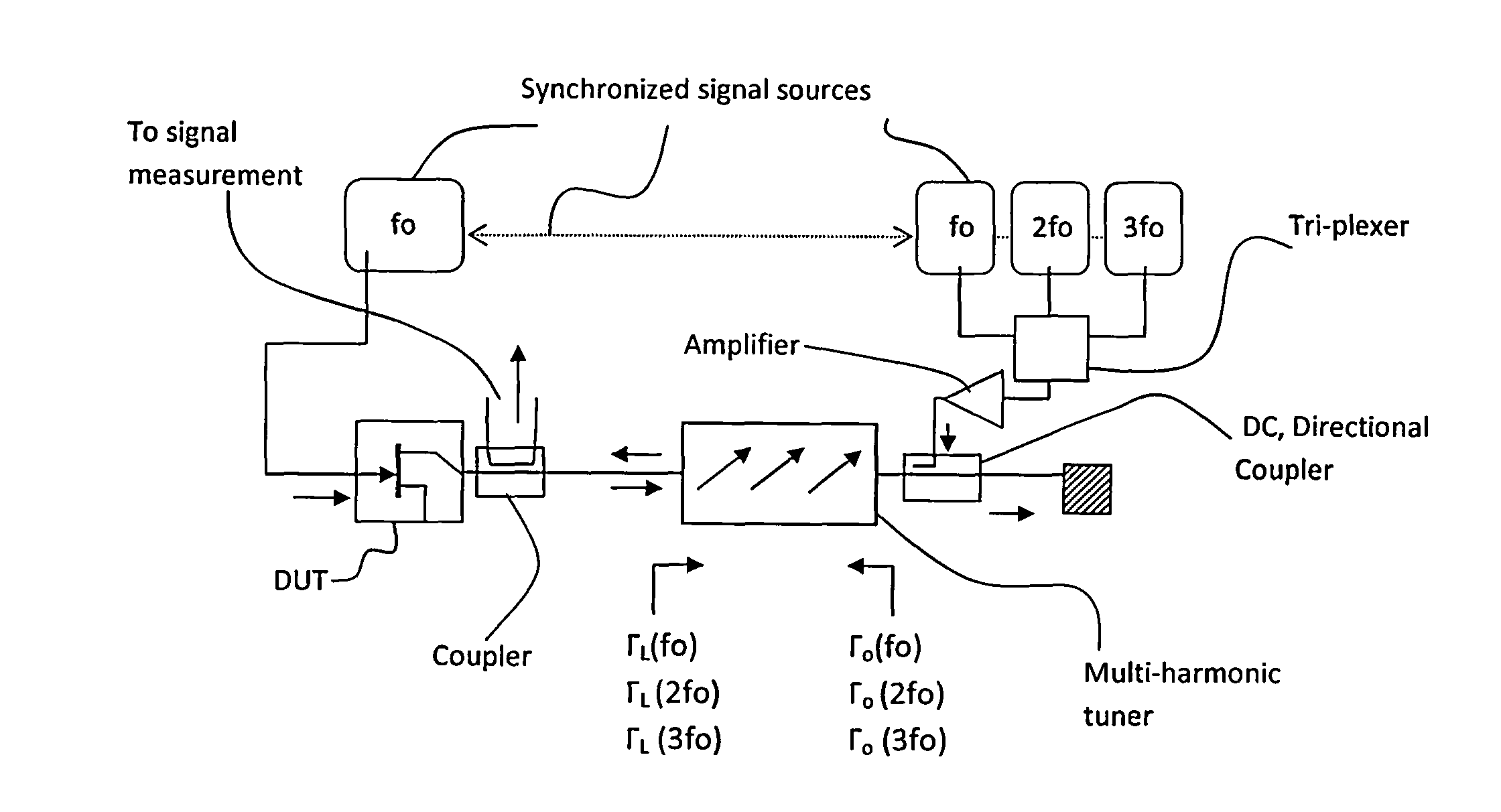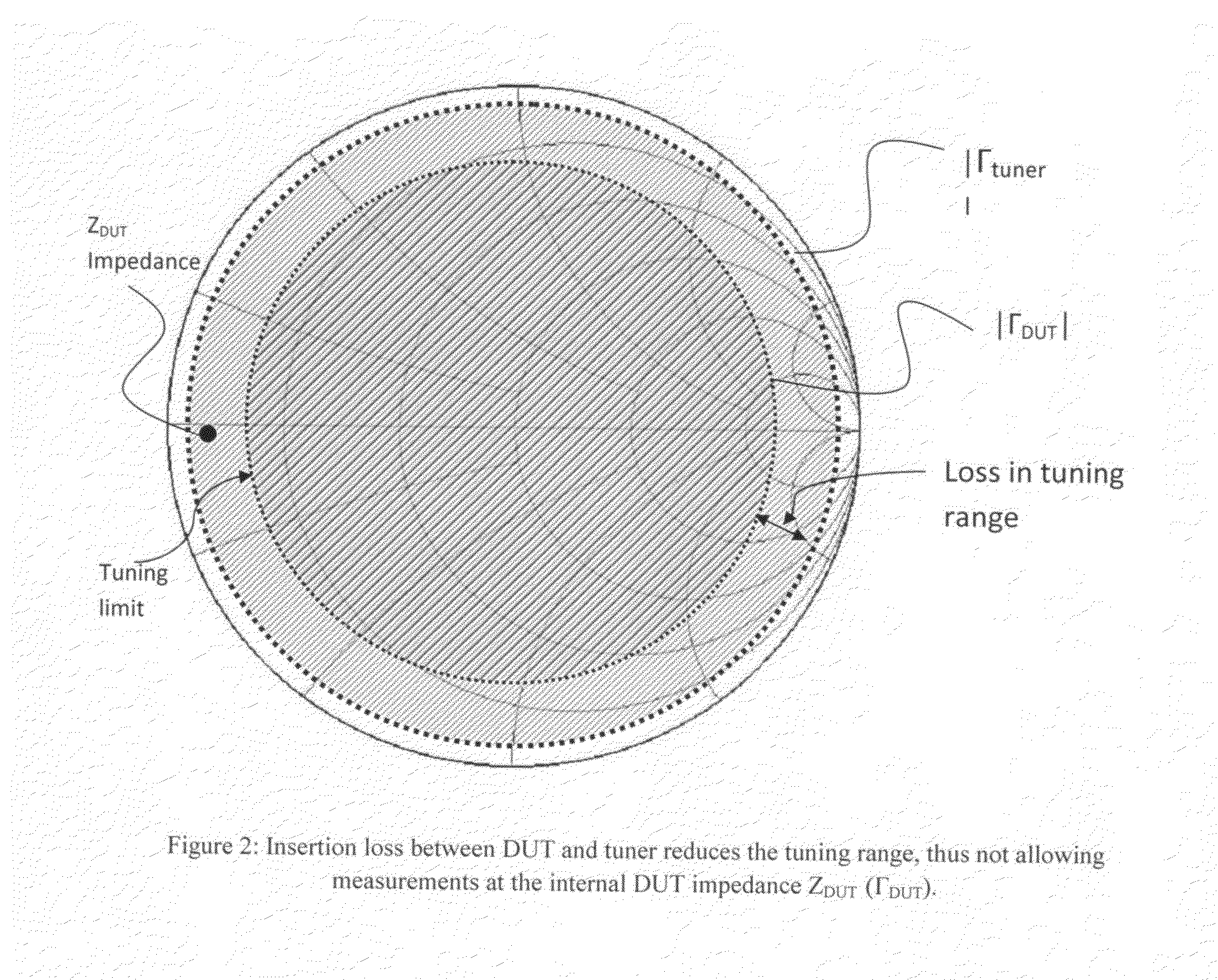Method for reducing power requirements in active load pull system
a load pull system and power requirement technology, applied in the direction of resistance/reactance/impedence, instruments, measurement devices, etc., can solve the problems of limited tuning range of passive impedance tuners and the reduction of the available tuning range at the dut reference plan
- Summary
- Abstract
- Description
- Claims
- Application Information
AI Technical Summary
Benefits of technology
Problems solved by technology
Method used
Image
Examples
Embodiment Construction
[0048]The present invention is about reducing the power requirements in the circuit of the active power injection into the DUT. As already shown an active injection system, consisting of an “active loop” or “two sources”, uses a (typically) 50Ω generator (the circulator in FIG. 3 or the directional coupler in FIG. 8 are both components with 50Ω internal impedance) to inject RF power into the output port of the DUT, which is a low value impedance of typically 0.5 to 2Ω. FIG. 6 illustrates the base of the power transfer calculations. In case of FIG. 6a (no transformer) the power delivered from the source Vo to the load R1 is: P1=Vo2*R1 / (R1−Ro)2. In the case of FIG. 6b (transformer 1:n included) the power delivered from the source Vo to R1 is: P1=Vo2*n2*R1 / (Ro−n2*R1)2. The ratio of power delivered to R1 directly or through a transformer is then: P1(direct) / P1 (transformed)=(Ro÷n2*R1)2 / (n2*(R1−Ro)2). In a typical case of R1=1Ω, Ro=50Ω, n=7, this ratio becomes: P1.direct / P1.transf=1 / 13=0...
PUM
 Login to View More
Login to View More Abstract
Description
Claims
Application Information
 Login to View More
Login to View More - R&D
- Intellectual Property
- Life Sciences
- Materials
- Tech Scout
- Unparalleled Data Quality
- Higher Quality Content
- 60% Fewer Hallucinations
Browse by: Latest US Patents, China's latest patents, Technical Efficacy Thesaurus, Application Domain, Technology Topic, Popular Technical Reports.
© 2025 PatSnap. All rights reserved.Legal|Privacy policy|Modern Slavery Act Transparency Statement|Sitemap|About US| Contact US: help@patsnap.com



